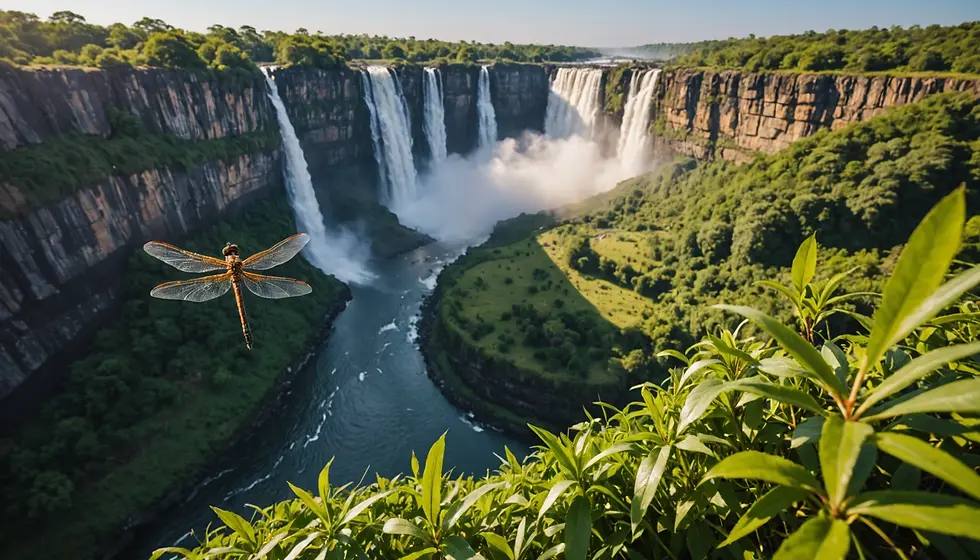5 Mind-Blowing Insect Sanctuaries You Don't Want to Miss on Your Next Adventure!
- Morgan Garrett
- Feb 26
- 4 min read
Are you ready to explore the hidden worlds of insects? Whether you're an avid wildlife enthusiast, a nature lover, or an aspiring photographer, our planet is filled with remarkable insect sanctuaries just waiting for your visit. From the vivid butterflies of Costa Rica to the glimmering desert beetles of Ethiopia, every location showcases unique ecosystems that are vital to our environment. Grab your camera and get ready—we're diving into five mesmerizing insect havens where you can appreciate nature's smallest wonders.
Monteverde Cloud Forest, Costa Rica
Nestled in the lush mountains of Costa Rica, the Monteverde Cloud Forest is renowned for being one of the most diverse butterfly and moth sanctuaries in the world. Here, you can find over 400 species of butterflies, including the majestic Blue Morphos and the stunning Hercules Moth.
Did you know this about the Blue Morpho? This butterfly is celebrated for its striking blue wings, which can reach up to 6 inches in size. Their vibrant color comes from microscopic scales that reflect light, creating a dazzling display as they flutter through the forest.
Butterflies are essential for pollination, helping countless plants and flowers reproduce and supporting local wildlife in turn. As you hike scenic trails in this cloud forest, keep your camera ready—it’s a perfect opportunity to capture the beauty of these enchanting creatures.

Mulu Caves, Borneo
Welcome to the Mulu Caves in Borneo, a breathtaking wonderland shaped by nature’s artistry. These caves are home to millions of wrinkle-lipped bats, creating a spectacular sight as they emerge into the twilight.
Beyond the bats, the caves are alive with fascinating insects, including glowworms that emit a bioluminescent light. These tiny insects not only captivate visitors but also indicate a healthy ecosystem. The glow produced by the larvae serves a dual purpose: attracting prey and maintaining the balance of the cave’s food web.
While visiting, take time to explore the intricate cave ecosystems that highlight the importance of biodiversity and conservation efforts. The caves tell us crucial stories about our natural world.

Danakil Depression, Ethiopia
Get ready to be amazed by the otherworldly landscape of the Danakil Depression in Ethiopia. Known for its extreme heat and colorful mineral formations, this area is also home to unique desert beetles, such as the Stenocara gracilipes.
These remarkable beetles can grow up to 1 inch and possess adaptations that allow them to survive in these harsh conditions. They collect moisture from fog, demonstrating incredible resilience. Their stunning iridescent shells not only provide camouflage but also reflect sunlight, helping them stay cool in the desert heat.
Studying these beetles and other forms of life in this unique environment is essential for understanding how organisms adapt to extreme climates and contributes to broader ecological studies.

Khao Sok National Park, Thailand
In Khao Sok National Park in Thailand, you can find the world’s largest flower, the Rafflesia arnoldii. This gigantic flower can reach up to 3 feet in diameter and emits a strong odor likened to rotting flesh to attract pollinators, including flies and beetles.
The presence of the Rafflesia adds to the park’s rich biodiversity, offering a unique ecosystem that intrigues visitors. As you venture through the dense jungles, keep an eye out for various butterflies and beetles playing crucial roles in maintaining this delicate balance of life.
One key species to the region is the Thai Black Tarantula which can grow up to 6 inches long. Unlike most tarantula species, the Thai black does not change color to brown when it molts. This species is somewhat aggressive and will bite if provoked.
Hiking in Khao Sok not only allows you to observe rare flora and fauna but also teaches you about the vital connections that sustain our ecosystems.
Victoria Falls, Zambia/Zimbabwe
Set against the backdrop of one of nature’s most impressive spectacles, Victoria Falls is not just a tourist favorite but also a fantastic spot for observing insect migration. Here, swarms of dazzling dragonflies can be seen dancing over the river, creating an exhilarating scene amidst the roar of the falls.
These colorful dragonflies do more than catch the eye; they are vital indicators of environmental health. They consume a large number of mosquitoes and other insects, helping maintain ecological balance in their habitats.
As you walk along the trails surrounding Victoria Falls, keep an eye out for the vibrant dragonflies gliding just above the water. They contribute significantly to the area's stunning biodiversity.

It's Time to Flutter Away...
As you embark on your next adventure, remember that these hidden gems invite you to explore the astonishing world of insects through their vibrant ecosystems. From the breathtaking butterfly sanctuaries of Costa Rica to the mesmerizing caves of Borneo, each destination offers a unique experience.
These insect sanctuaries not only provide incredible opportunities for travelers but also remind us of the importance of preservation in our changing world. Embrace your adventurous spirit and journey into these captivating landscapes—the tiny wonders of our planet are waiting for you to uncover their secrets!







Comments